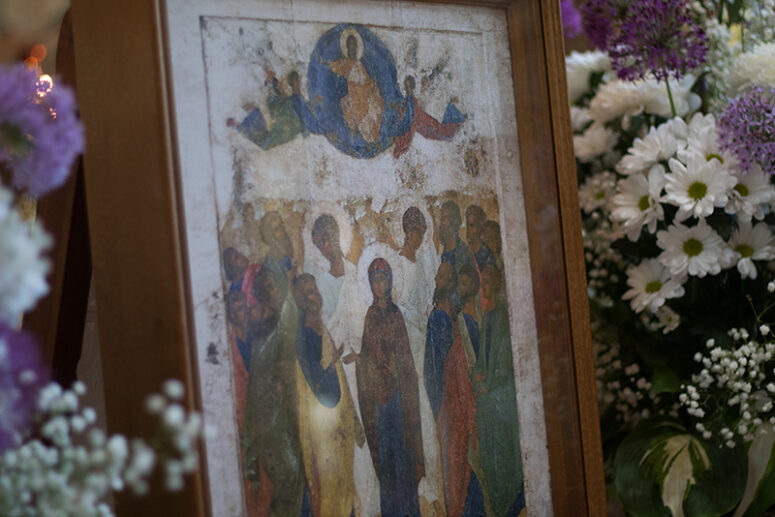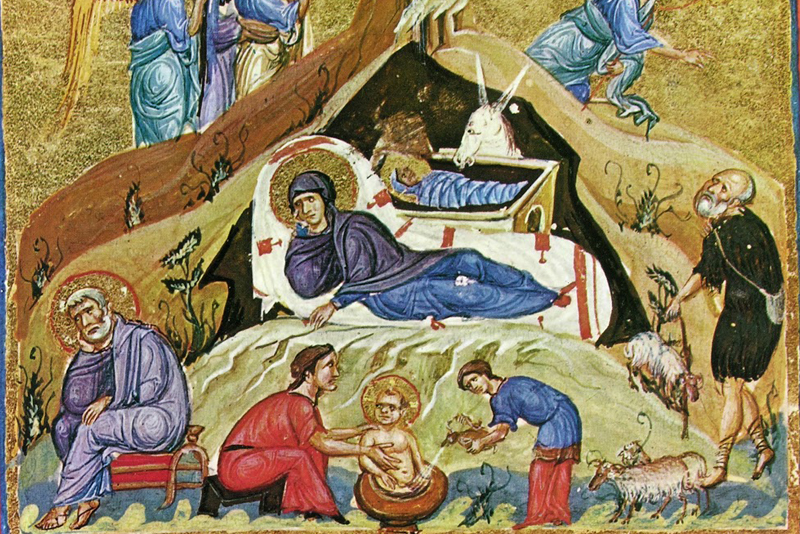
Some of us may find it unbelievable, but in his writings, the Evangelist Luke appears to portray the Ascension of our Lord as an event that immediately followed His resurrection.
Mark, another evangelist, quotes the words of Jesus at His trial, “You will see the Son of Man sitting at the right hand of the Mighty One and coming on the clouds of heaven.” Taking heed of Mark’s account, Luke offers us a different interpretation: “But from now on, the Son of Man will be seated at the right hand of the mighty God.” (Luke 22:69). The words “from now on” in Luke’s text suggest that Jesus would sit at the right hand of the Father immediately after His death, and not after forty days.
Consider another example. In his conversation with two travellers on the road to Emmaus, Jesus asked, “Did not the Messiah have to suffer these things and then enter his glory?” (Luke 24:26). These words also do not suggest that there might be any time gap between His passions and resurrection, and His subsequent glorification and ascension, but refer to them as a sequence of events that succeed each other immediately.
Furthermore, as we read in the Book of Acts, God has raised this Jesus to life, and we are all witnesses of it. Exalted to the right hand of God, he has received from the Father the promised Holy Spirit… (Acts 2: 32-33). This passage also portrays the Resurrection and the Ascension as a single event.
In the writings of Luke, we will find many more passages with little mention of the Resurrected Christ spending time with His disciples but focus on His ascension coming immediately after his Resurrection (See Acts 3:15–16; 4:10; 5:30–32; 10:40–43; 13:31–37).
The narrative of Christ’s ascension happening immediately after His resurrection ( Luke 24) is quite typical of Luke and reflects his individual style that reveals itself as we compare the above passages with his other writings.
This begs the question: how is Luke’s account consistent with the narration of the Book of Acts, the basis for the celebration of the feast of the Ascension on the fortieth day after Pascha?
If Luke sees the Ascension of the Lord as a continuation of His resurrection, why, then, does he talk about His appearances to the disciples over forty days?
To begin with, the early Christian tradition never suggested that Jesus ascended immediately after His resurrection. The Ascension happened after some time, which Jesus would have spent with His disciples. But Luke chooses not to separate the Ascension from the Resurrection.
Why, then, does he include a narration of the forty days of Christ’s appearances?
First, he clearly and unequivocally postulates, like no one before, that the resurrected Christ had spent an amount of time with His apostles.
He puts it on record because this fact is important for the subsequent narration of the Book of Acts. In a sense, Luke’s narrative revolves around it, and is key to our understanding of the life of the early Church.
With it, Luke shows the Holy Church as the successor to the tradition that the Lord had revealed to it: “He appeared to them over forty days and spoke about the kingdom of God.” (Acts 1:3).
By mentioning in his account the number forty, Luke was possibly comparing this period with Christ’s forty days in the desert. In the desert, He was preparing for His own ministry on earth. During the forty days after His resurrection, he was preparing the Apostles for their ministry.
This focus on Jesus’ time with His disciples allows for a natural and smooth transition in the Book of Acts to the key Christian teachings on the nature and person of Christ, on the Holy Spirit, salvation, and preaching of the Good News.
Of the teachings on Christ, Luke underlines His glorious departure to Heaven and His enthronement there. Because He has been exalted to the right hand of God, He is professed by the faithful as the Lord and Christ.
– The Holy Spirit will descend after Christ’s departure, and the discussion of His departure is a good starting point for introducing the idea of the Pentecost or the coming of the Holy Spirit.
In his narrative on salvation, Luke presents the Ascension as an entry point to the discussion of some of the topics of greatest concern to him. Jesus enters Divine Glory through suffering and grants from the Heavenly Throne His forgiveness to all who repent and have faith in Him.
In the context of the Christian teachings about the end of times, Luke relates the words of the angels at Christ’s ascension: “This same Jesus, who has been taken from you into heaven, will come back in the same way you have seen him go into heaven.” In this way, the ascension of our Lord lays the groundwork for our solid faith in Christ’s return.
Finally, concerning the propagation of the faith, Luke tells us about the His commandments to the Apostles to preach Christ, who has now been exalted to divine glory. For forty days, the disciples met their resurrected teacher and received instruction from Him on how they should preach the good news about Him to the world. He told them to expect in several days the descent of the Holy Spirit to prop them up.
To summarise, Luke’s narrative about Christ’s time with His disciples and His glorious departure to heaven is to him an important entry point to the discussion of the history and growth of the Christian church.
Translated by The Catalogue of Good Deeds
Sourced from: https://foma.ru/voznesenie-na-kakoe-nebo-voznessya-hristos.html




